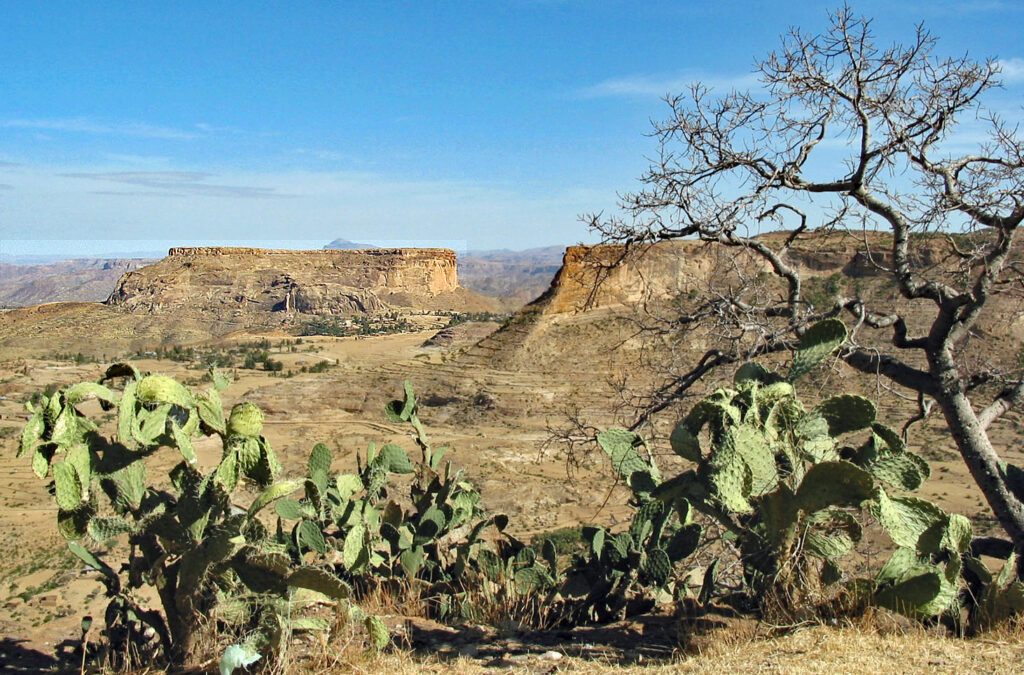
type: EARLY BUILT CHURCH
7th CENTURY AND LATER
± in between aksum and adigrat the landscape is characterized by table mountains, near the eritrean border. aksum was the capital of the former aksumite kingdom (± 0 – 700). the town is still famous for its stelae (see architecture…). tradition has it that the arc of the covenant is inside the chapel of the mary of sion church. so aksum is also a holy place for pilgrimage.

on top of one of these table mountains a church was built in the sixth century during the reign of king kaleb. the patron of the church is abune aregawi. king kaleb had a road constructed to the top for transport of building materials.

as soon as the church was finished, king kaleb’s road was broken down. a solution had to be found for getting the priests and pelgrims up the vertical wall to the church. the patron of the church abune aregawi, appeared to be a source of inspiration for this elevator. in the meantime a monastery was founded there, named debre damo. most monasteries are situated on top of a hill or mountain. the name for mountain is debre, that has become a synonym for monastery, so debre damo can be read as the mountain damo or the monastery damo.
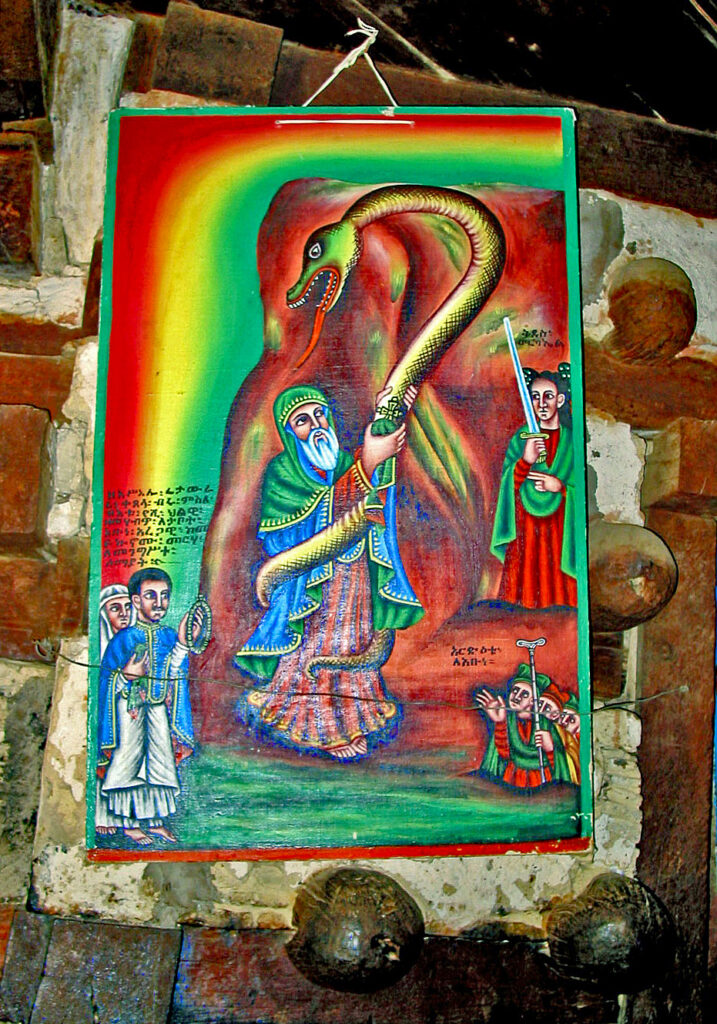
abuna aregawi, the patron of this church, is one of the nine syrian saints, often referred to as ’the nine’, who christianized the northern part of ethiopia in the 5th and 6th centuries. in those days he looked for a quiet place to establish a new monastery as close as possible to the lord in heaven.
one day he walked through this landscape with the table mountains and considered them the ideal location for his building plans, but how to get up there? at that moment he was startled by a snake that approached him rapidly. he ran away but the snake was much quicker.
fortunately the archangel michael witnessed what was happening. in the name of god he drew his sword and ordered the serpent not to attack abune aregawi but to help him getting up the mountain. so the animal changed his mind, folded the saint in his coils and up they went. we can see this miracle happen in the picture that is hanging in the entrance hall of the church.
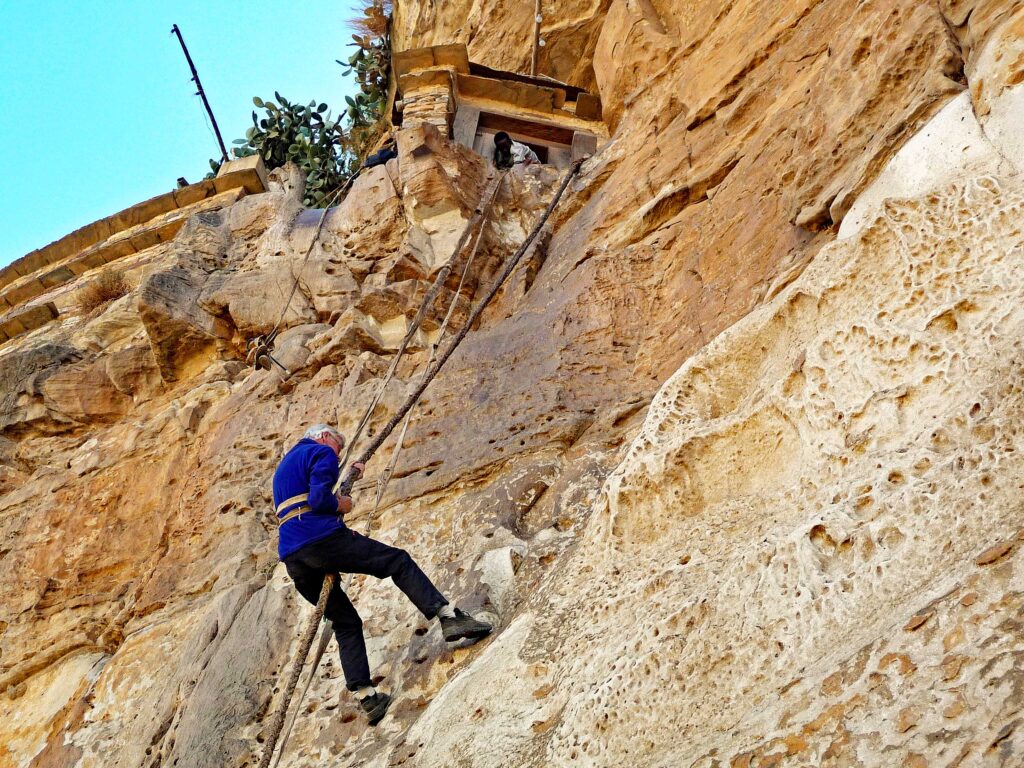
visitors are secured by a goatskin leather belt and have a rope between their legs and hands to climb up the rocky wall. in doing so they are going up in the same way as abuna aregawi did in the sixth century. only the serpent did not show up since then. that is why the priest has taken over the serpent’s job by holding the leather belt, tied around the waist of the visitor.
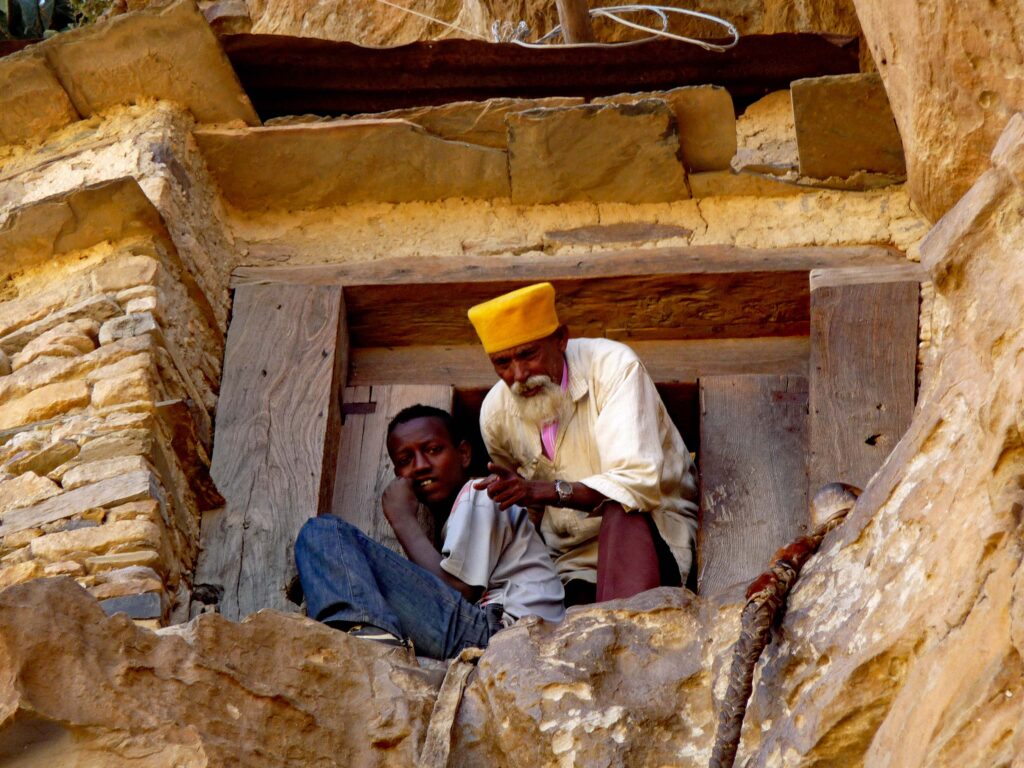
the priest, your life saver, has the safety belt in his hands while listening to the instructions of his assistant. if the latter notices that your climbing technique is less than perfect he will ask the priest to hoist you.
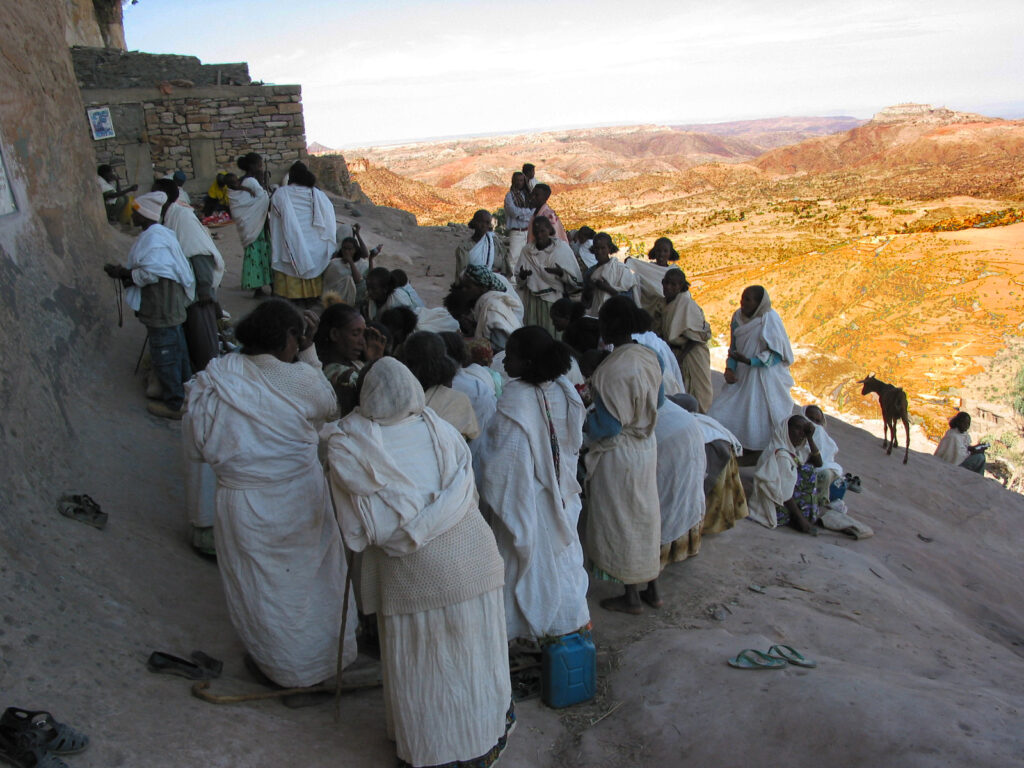
the female pelgrims stay below while singing and praying or carrying their child. they are not allowed to go up. which in this particular case might be understandable.

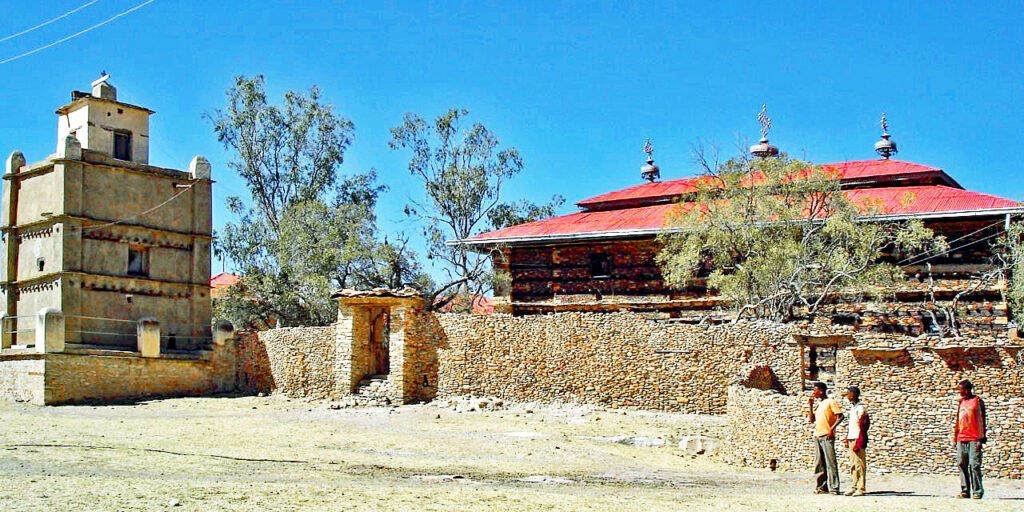
as soon as you have gone up, it is only a short climb to the top of the table mountain where the church and the tower are seen side by side.


from the towertop you get a good view on the construction of the church. tower and church show the aksumite monkey heads! the tower walls are plastered all over.
the church walls however, have lost their stuco completely after the latest restoration. the corrugated iron roofing is not a part of the original church. it has been added by way of a protection shield against acid rains.

this drawing of the church without the corrugated iron roofing was made by daniel krencker, who participated in the d.a.e. (deutsche aksum expedition) in 1906.


the picture on the left shows the main entrance on the westside. in my view the threshold and the capital are in the wrong position. they must be interchanged as shows the picture on the right, manipulated by myself. do not be shocked by the fact that the hanging curtains are standing up now, they are not part of the problem. where did I get this idea from?

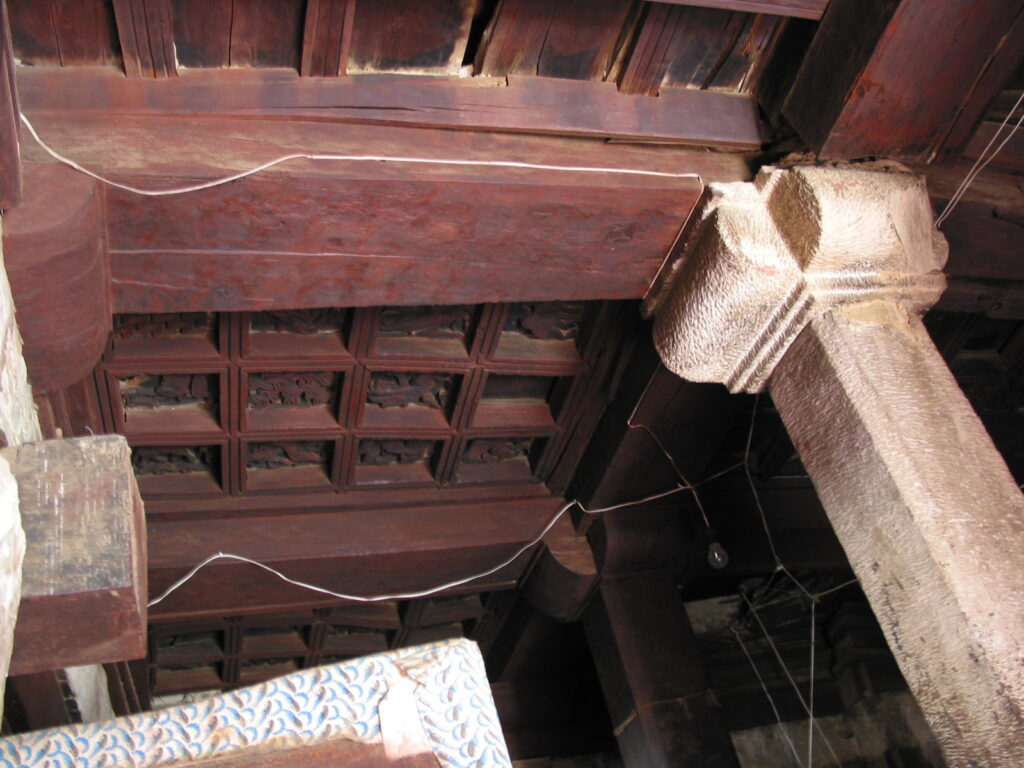
the entrance hall is adorned by a curious coffered ceiling, showing a variety of natural and fabulous animals. in this configuration the ceiling may represent the divine creation of the animal world. the coffers are supposed to originate from a former castle.
the ceiling is supported by an axumite pillar with chamfered edges and a composite capital. the stepped capital is surmounted by a bracket capital, the bracket capital occurs most frequently in aksumite architecture and that is what made me believe that threshold and capital are nor correctely positioned.

we mentioned the entrance hall when describing how abuna aregawi was lifted up the mountain. this is the eastern wall in the hall showing what the outer walls of the building originally looked like. the monkey heads are resting on the longitudinal beams. the two magnificent timber doors with their impressive cubic heads on the corners, grant access to the holiest of the church, though they will not open for the regular tourist. the stone parts between the beams are plastered and whitewashed.

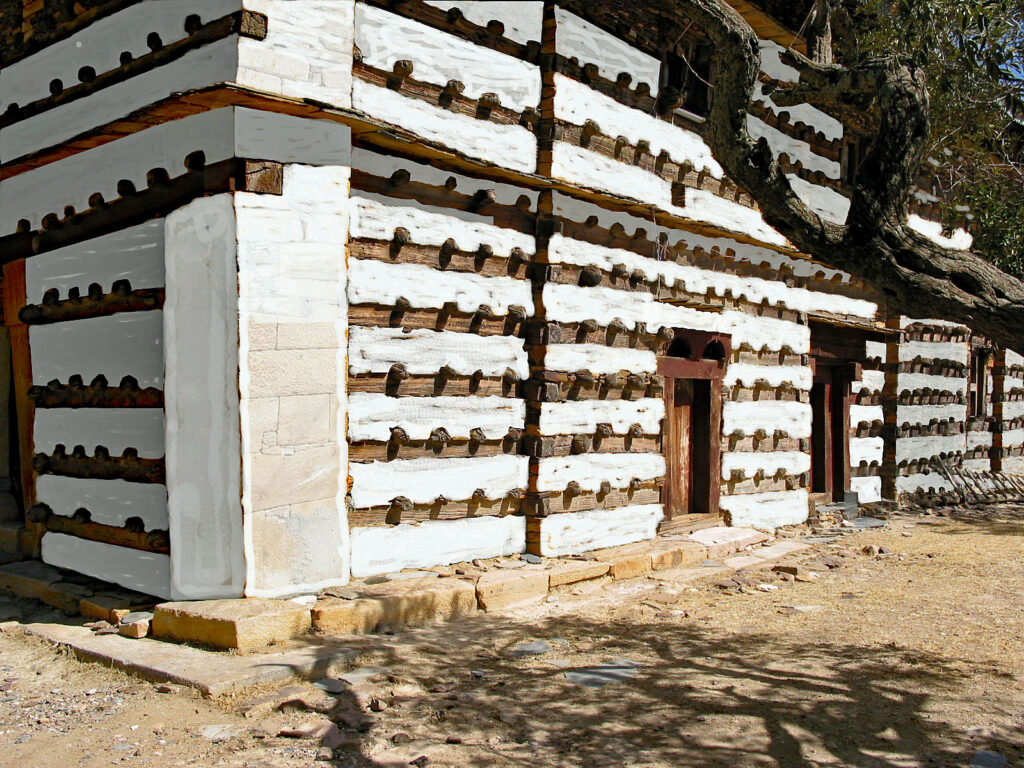
as written before the outer church walls were left without their plaster and whitewash after the latest restoration. so we do not get a right impression of what built churches in the aksumite style looked like.
in order to get a more realistic view of the past, I dipped my brush into a white adobe paint and plastered the walls.
so far the description of the debre damo.
